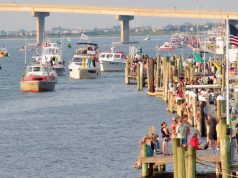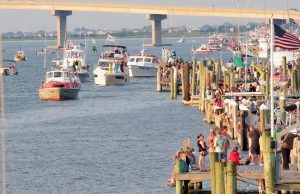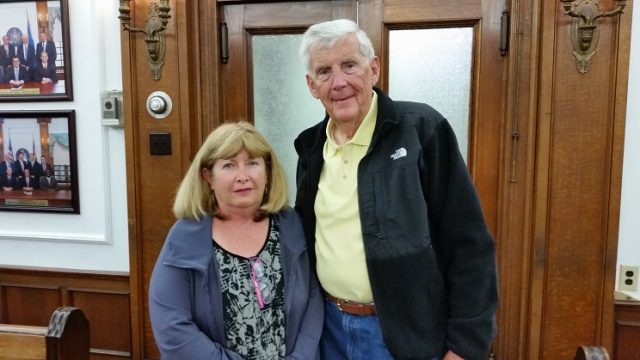
By Donald Wittkowski
Donna Buker said a rainstorm last Thursday lasted only 30 minutes, but swamped the streets around her home at Seventh Street and Moore Avenue with about a foot of water.
Although that much storm water would be extraordinary for most areas, it was hardly an aberration in Buker’s flood-prone neighborhood close to the bay in the north end of town, she explained.
“Our house was built in 2006. The flooding has gotten increasingly worse since then,” she said.
On Thursday night, Buker and her husband, Bob, appeared before City Council to plead for help from the flood waters. It appears they will get it. Mayor Jay Gillian assured them the city is moving ahead with designs for a series of pumping stations in the north end to ease the perennial flooding.
“I sympathize with everybody in those areas of town. If you live there, you know it needs to be done,” Gillian said, referring to the flood-control project.
The city had originally proposed building one massive pumping station on Sixth Street to handle the flooding, but backed off after the estimated cost came in about three times the project’s budget, the mayor said.
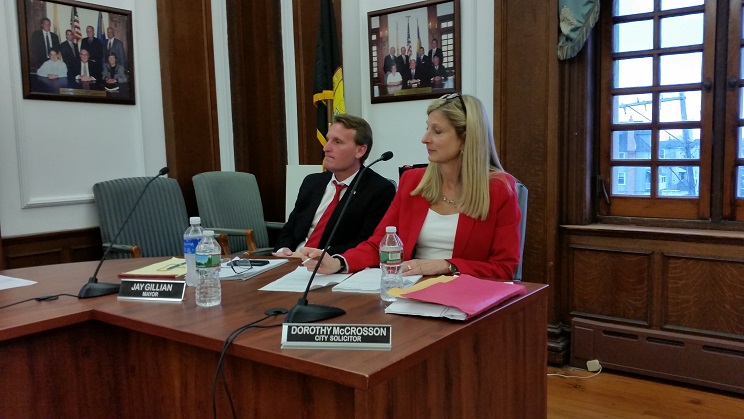
Neighbors also objected to the original designs. They complained about the prospect of huge amounts of water being channeled down Sixth Street through a single outfall pipe to the bay. Gillian acknowledged that part of the plan would have been “overkill.”
After studying the project further, city officials decided it would be better – and more affordable – to instead build a series of smaller pumping stations strategically located in the north end to get rid of flood waters.
“We can get more done, with less money, by redesigning it,” Gillian said.
The city expects to accept bids for the project this summer and start construction in the fall. At a town hall meeting in 2015, city officials estimated the cost would be $8.7 million. A $5 million grant from the Federal Emergency Management Agency will help pay for construction.
The redesign, though, has delayed the project. Councilman Keith Hartzell said everyone is anxious to get construction started.
“Hopefully, the delay will be well worth it for everybody,” Hartzell said. “We’re definitely focused on it.”
The city also wants to build new bulkheads in the north end of town to help prevent flooding, although they would come later on, Gillian said.
First Ward Councilman Michael DeVlieger, who represents the north end, said the city should pursue plans for the new bulkheads on a “parallel track” with the pumping project.
“It’s like spitting into the wind. It’s going to come back at you if don’t have a bulkhead,” DeVlieger said of the flood waters.
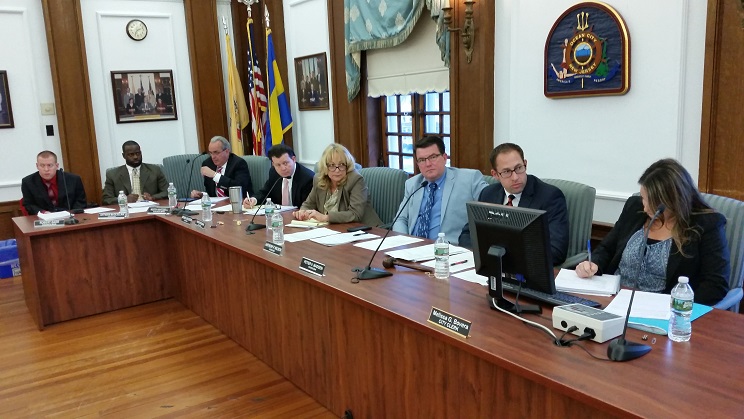
The city will use a similar flood-control project completed in 2014 for the Merion Park neighborhood as a model for the north end pumping stations. Multiple pumping stations are also being built as part of a $6.6 million road and drainage project that began this week in flood-prone neighborhoods between 26th and 34th streets.
Donna and Bob Buker, meanwhile, said that if they don’t get some relief from the flooding in their neighborhood, they will probably be forced to move out.
“We love our home. We love our neighbors. We don’t want to move out. But we are entertaining that idea if the flooding continues,” Donna Buker said. “We would be so happy to go to sleep at night and not have to worry about it raining. I would be so happy to get some remediation.”
After dealing with so much flooding over the past 10 years, Buker grimly noted that she and her husband “live by the tide.”
“When we get storms, you have to hope that you have enough time to get your car out, or you pray that the water doesn’t come up on you,” she said.


